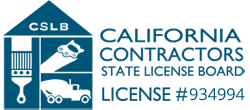
Flooding and plumbing leaks can promote the growth of hazardous mold on and beneath your home’s flooring.
Mold doesn’t need much water to grow and causes havoc. All it needs is a little moisture and dark room, and it can grow quickly in areas like your carpet.
The Dangers of Mold
Mold is not just an aesthetic issue; it can be harmful to the health of your family. For example, black mold, scientifically known as Stachybotrys Chartarum, can cause recurrent respiratory infections, the development of asthma in previously undiagnosed persons, asthma episodes, trouble breathing, coughing, and other symptoms.
How to Reduce Risks of Carpet Mold
If you are going through respiratory problems or even allergies for no reason, have your home checked for mold right away. Here are tips you can follow to troubleshoot and prevent further mold issues:
-
Drain Stagnant Water
If the carpet is less than 10 square feet and contains less than an inch of standing water, you should rent a wet-dry vacuum to remove the water. Before coming into touch with contaminated water, ensure you have the proper protection. Wear safety goggles, gloves, boots, long sleeves, long pants, a mask, and an N-95 respirator.
However, if the standing water covers more than 10 square feet or there is more than an inch of water, you should contact a local water damage restoration business for assistance.
Also, check the exterior of your home for signs of groundwater or water accumulation against the foundation. Mold can grow in your home if water seeps inside.
-
Remove Wet and Damp Objects
Take the damp carpet outside, let them dry and clean, and store them there until your insurance company can look at the damage. Otherwise, these items may remain damp and breed mold.
Some building elements, including drywall, ceiling tiles, wallpaper, insulation, and carpeting, may need to be changed to avoid the development and spread of mold. Additionally, removing damp items will lessen the overall humidity in your home.
-
Wash Every Surface
You need to stop mold growth in its tracks. If the space to be cleaned is less than 10 square feet, you can choose to clean it yourself.
Sanitize hard surfaces, such as walls and baseboards, with a cleaning solution composed of 1.5 cups of fresh chlorine bleach and one gallon of water. When cleaning with this solution, use safety equipment such as a face mask and rubber gloves.
Additionally, spray any visible mold with a solution of 10 percent bleach to 90 percent water. Allow this solution to rest for about 10 minutes, then rinse the area and allow it to dry. You can also try an antibacterial cleanser or undiluted white vinegar on soft surfaces.
-
Allow Your Home Time to Dry Out
Air out your home as you wait for a flood repair contractor. Open all windows and doors, install multiple fans (aimed at windows and doorways), and run dehumidifiers for at least three days.
Get a humidifier with a larger tank that collects at least 60 ounces of water daily so that you do not have to empty it as frequently. Be alert for musty odors that indicate the presence of mold.
Conclusion
Mold can conceal itself through air ducts, walls, and carpeting. Do not activate your HVAC system if you suspect it has been compromised. Hire a damage restoration service to inspect and clean your unit. If water damage or a mold issue feels out of control, you should work with a licensed mold removal company in your area to assess the situation and return things to a normal, drier state as soon as possible.
Get the most reliable damage restoration service for mold, flood, fire, storm, and other problems from Restoration Masters today. We offer full-service restoration for both homes and businesses. Count on our team of certified restoration technicians to give you reliable service and good work. Call us now!





